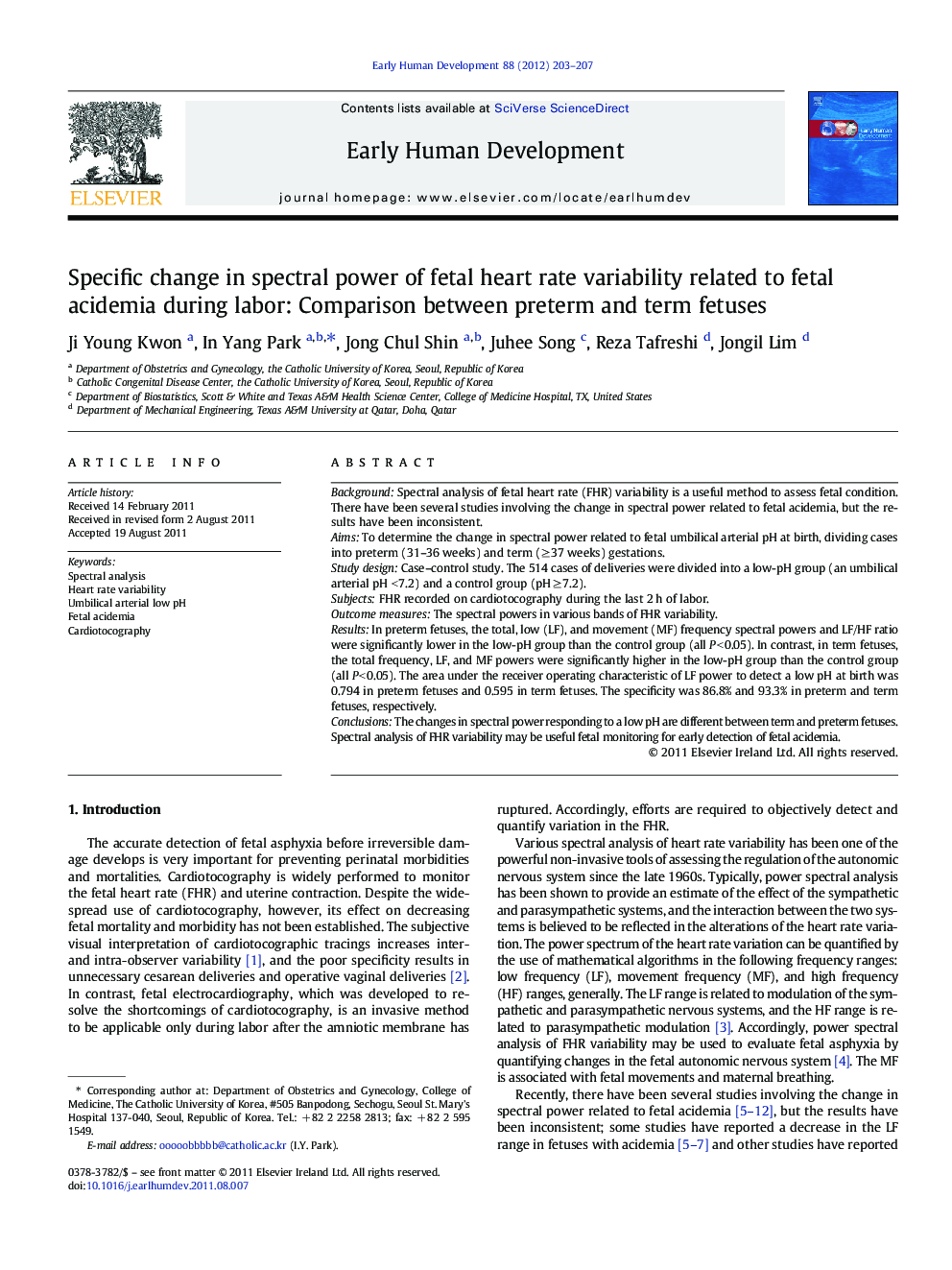| Article ID | Journal | Published Year | Pages | File Type |
|---|---|---|---|---|
| 3918385 | Early Human Development | 2012 | 5 Pages |
BackgroundSpectral analysis of fetal heart rate (FHR) variability is a useful method to assess fetal condition. There have been several studies involving the change in spectral power related to fetal acidemia, but the results have been inconsistent.AimsTo determine the change in spectral power related to fetal umbilical arterial pH at birth, dividing cases into preterm (31–36 weeks) and term (≥ 37 weeks) gestations.Study designCase–control study. The 514 cases of deliveries were divided into a low-pH group (an umbilical arterial pH < 7.2) and a control group (pH ≥ 7.2).SubjectsFHR recorded on cardiotocography during the last 2 h of labor.Outcome measuresThe spectral powers in various bands of FHR variability.ResultsIn preterm fetuses, the total, low (LF), and movement (MF) frequency spectral powers and LF/HF ratio were significantly lower in the low-pH group than the control group (all P < 0.05). In contrast, in term fetuses, the total frequency, LF, and MF powers were significantly higher in the low-pH group than the control group (all P < 0.05). The area under the receiver operating characteristic of LF power to detect a low pH at birth was 0.794 in preterm fetuses and 0.595 in term fetuses. The specificity was 86.8% and 93.3% in preterm and term fetuses, respectively.ConclusionsThe changes in spectral power responding to a low pH are different between term and preterm fetuses. Spectral analysis of FHR variability may be useful fetal monitoring for early detection of fetal acidemia.
